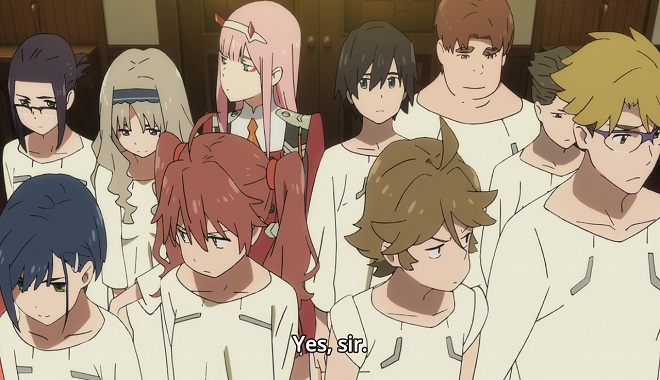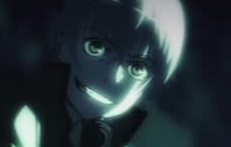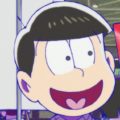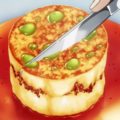It’s not the Best from Both Parents, It’s not the Worst from Both Parents. It’s… Darling in the Franxx

Mention that an anime is made by Studio Trigger series and immediately one will think of things such as extreme levels of extroversion, over-the-top battles, and larger-than-life characters. Everything is brash and in-your-face, but the series will still have a strong storyline and message. Now, combine that a subsidiary of A-1 Pictures, known for everything from “Black Butler” to “Ao no Exorcist” to “Sword Art Online,” and it should be a recipe for success, right? Two great studios, all their talent pooled together, this should be epic. Well, this subsidiary, known as Cloverworks, also responsible for the Persona 5 anime, doesn’t have as long of a resume as its parent company, but it should have at least a good amount of the same talent so expectations were still high.
Starting with that pedigree, and from the first episode of the series “Darling in the Franxx,” it seems to be set up for success, despite the first episode possessing very little of Studio Trigger’s signatures. No angular character and scenery designs here, as everything has been rounded out or sanded down to look very generic and bland. The color palate does not help either, as everything is very matte and desaturated, even dull, with a sort of gray or white fog constantly hovering in many of the scenes and watering down the intensity. The story also did not kick the viewer into the series with as much intensity as a typical Studio Trigger show, but instead used more of a gentle push with the actions and dialogue of the two main characters, the pink haired female known as 02 (pronounced “zero-two”) and the pseudo-Shinji-esque male known as Hiro. It is not soon afterwards that 02 oddly begins to refer to Hiro as her “darling,” and they begin copiloting the enormous mech known as the “Strelizia,” of the “Franxx” family. However, it is in this first battle and episode that a base platform and understanding of the series’ mechanicals is explained, and it is very easy to understand what is going on, though even the battle itself somehow lacks the intensity of a Studio Trigger series, with Hiro merely hanging on to keep up with 02’s moves. Even shouting out strategies and moves does not raise the intensity too much, despite the zippy animation and excellent choreography during fight sequences.
Within a few episodes, analogies began forming as to the environment the characters of Squad 13 reside in, including Iraq under Saddam Hussein, the novel 1984, and North Korea for the last 60 years. The main characters are entirely submissive to the mysterious “Papa,” policy is dictated by the APE council of bizarrely-dressed bureaucrats, and the monotonous, block-like adults convey the messages of APE and Papa to the children, with a focus on Squad 13, of which 02 and Hiro are a part of. New elements are introduced at a steady rate so this is a very easy-to-understand series, but within a few episodes it was apparent that this joint collaborative effort has issues. It’s not that this is a terrible series, but the mechanics just did not jive well with each other. While one immediately realizes that the Studio Trigger heritage has been either suppressed or replaced, it takes a few more episodes before realizing that the heritage and signatures of A-1 Pictures are unfortunately not used as a replacement.

One glance at the bizarre-looking Franxx mechs, with their oversized, googly eyes, bizarre designs, and an ungainly and sexualized piloting system makes one wonder who was in charge of the design and mechanicals of the anime, as he or she has taken on the worst aspects of multiple series. For instance, like in “Pacific Rim,” one has to be in sync with his or her copilot, except in “Darling in the Franxx,” instead of syncing physical motions, one has to sync thoughts and emotions to their fellow copilot, or the entire mech will shut down, as they have a tendency to do in the middle of battles. One can pilot alone at severe physical and mental taxation, and of course there is also an auxiliary battery that can run out a la “Neon Genesis Evangelion.” Finally, having 2 pilots instead of 1 is a huge disadvantage compared with mechs from “Gundam,” “Neon Genesis Evangelion,” or “Code Geass,” and even with two pilots, members of Squad 13 seem to be piloting suits barely powerful enough to take on their opponents, the neon-blue klaxosaurs. Now, compare that with the strength of the multi-pilot “Gurren Lagann.” Making Strelizia look like a desaturized knockoff of “Star Driver’s” Tauburn doesn’t earn too many creativity points, either.

In going for an easy-to-understand series and having a lot of Studio Trigger’s signature elements watered down, “Darling in the Franxx” seemed to be another déjà vu of “Rahxephon,” a series which I had stopped watching in the middle of due to it being too dull but praised for somehow being a more palatable version of “Neon Genesis Evangelion.” In addition to using amongst the worst piloting system possible for the mechs, character interactions were a sour point for the series as well, especially the dialogue of the apathetic adults. Now, this was necessary for the series, but even in the background, away from the children, they have very little depth and could easily have been replaced by robots or drones. Law enforcement is laughable, as the guards seem to have no sense of fight or desire to lay down the law when children act disobediently, and punishments seem harsh but still leave gaping holes that dilute their effect. The children of Squad 13 have been designed and churned out to be the most tropified batch of characters since “Kiznaiver,” only this time, the character chemistry is dismal and forced, with harsh, crashing dialogue that struggles to develop the plotline and character empathy. To get what I mean, just compare the characters’ positions and conversations from inside the Franxx to the conversations outside of it and contrast that to the relationship that Hiro has with 02. Dialogue is shallow and forced, with the worst offender being the arrogant Zorome along his slightly more palatable partner Miku. That is, amongst Squad 13 members. When the Nines get introduced, the series commits the same offense as the second half of “Dimension W,” introducing too many characters and then not focusing on them at all. The only interesting thing about these characters is their multicolored hair styles, modeled after a bowl of Froot Loops, as their dialogue is even worse than Squad 13’s and not even all of the characters’ names are mentioned.
Nonetheless, as the plot steadily moves along and more is revealed about the characters’ predicaments, one has to bank solace on the quite good relationship between 02 and Hiro, along with the solid storyline. Solidly constructed, that is, especially the backstory, save for the hasty rush of information one obtains in the latter third of the series. High points include 02’s backstory, Hiro’s backstory, and anything reference to childbirth and energy extraction. However, despite what seem to be brilliant elements that when combined together would make an epic story, somehow a lot of the magic got lost along the way when everything got put together and the elements all seem to be separate blocks that each stay in their own little bubble. Even the element of wiping memories feels lackadaisically implemented, and the lack of cohesion and uneasiness from the early episodes in regards to character chemistry, dialogue, coloring, and design made it a very unstable platform from which to build the series on. Character development does occur, of course, but the dialogue and chemistry still felt forced and unorganic. The message of the importance of human relationships, critical thinking, and cooperation get through in the series, though as quiet whispers rather than as shouts and punches to the face. It’s as if the series didn’t know what sort of personality to take in regards to the issues it wants to address: warm and romantic, cold and serious, lighthearted and silly, or brash and in-your-face, and it somehow manages to result in a weak, mushy, and confused mix of all of the above.

In the end, “Darling in the Franxx” was a true disappointment. The pedigree and talent that these two studios had to work with should have allowed them to come up with something much much better. The series itself did not feel like it took positive bits from each parent studio to be combined together to form something epic. It did not seem like tasks were divided evenly amongst the two studios and instead felt like a collaborative effort, except the 2 studios were at polar opposites of the thought spectrum and decided to meet in the middle in regards to every element of the anime in order to not offend anyone. Neither studio’s corporate identities, strengths, or weaknesses show up in the series, and instead the result is a generic, gray bowl of sludge. The series functions, due to its solid plotline and pretty good relationship of the two main characters, and the ending at least leaves no question as to the message with its conclusion. However, the series has way too many technical flaws to address, and in the end results in at best a below average anime. However, like how “Kiznaiver’s” above-average ranking results in an average Studio Trigger series, “Darling in the Franxx” is instead a below average anime resulting in an awful Studio Trigger series. If it can be called that, of course. Saying “Darling in the Franxx” as being the quintessential Studio Trigger anime is like serving nonalcoholic beer at an Oktoberfest celebration. I will not blame it entirely on Cloverworks as the series did not give off the vibe of an A-1 product, but this blame is to be shared equally between each studio involved. Something went wrong, I don’t know what, but “Darling in the Franxx” is an entirely skippable anime. These two studios can do a whole lot better.






Up until the info dump of half-assed explanations occurred, I was pleasantly surprised by how much I was enjoying Franxx. A lot of people felt the need to point out the silly piloting method, but ideas like that one always come across as “Oh Japan!” A questionable decision made to get more people to talk about the show. What I found odd was that it hadn’t suddenly introduced world-destroying/conquering aliens into the mix, until it finally did, and, judging by all the clickbait-titled videos of confusion and anger over it on YT (or fake anger to get more views and ad revenue for themselves), it felt like I was the only one right who, right from the start, was expecting the series to pull that nonsense.
All in all, Darling’s last episode summed it all up nicely. We got this half-n-half of… I guess that was action-ish… and this peaceful rebuilding of the planet, and both halves were just shallow and uninteresting as a result. Should have just picked one or the other and stuck to it.
Man, I remember that I did, in fact, watch Star Driver at some point, but that’s it. I can’t recall anything else about that show whatsoever.